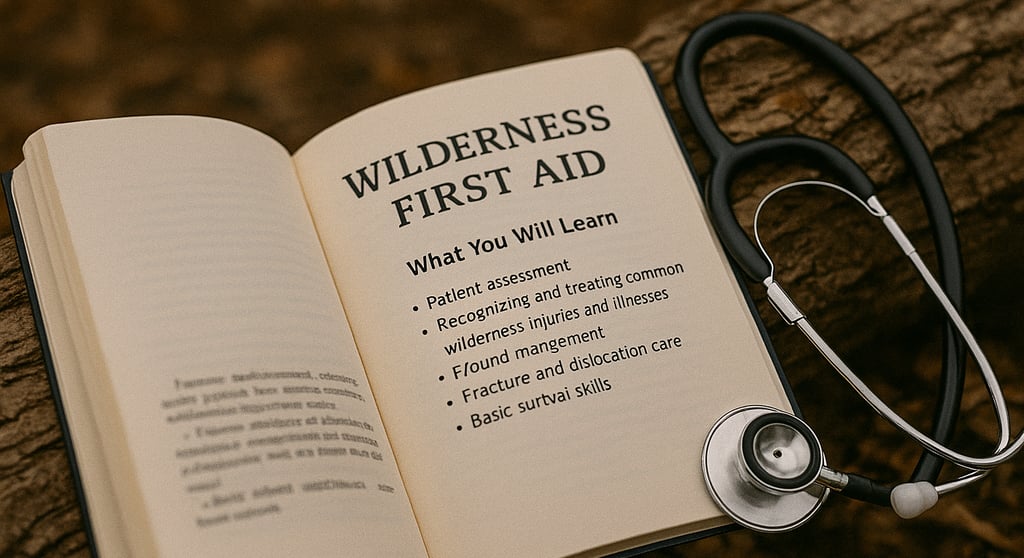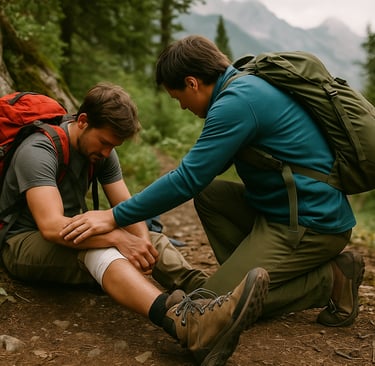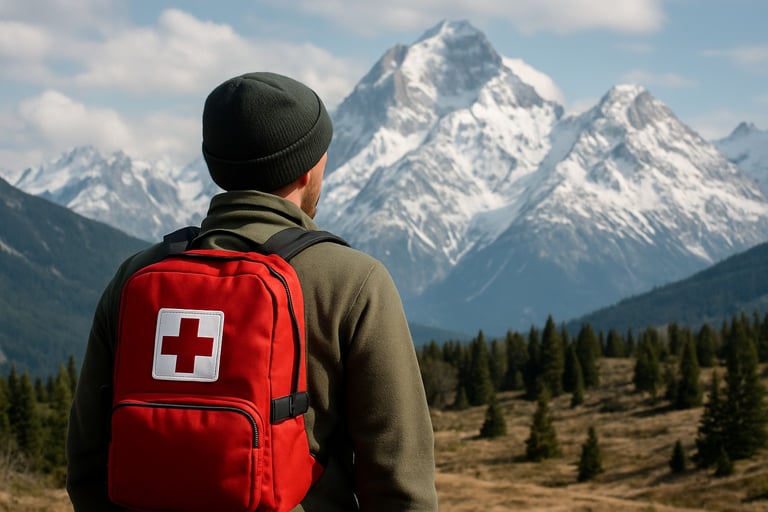What You’ll Learn in Wilderness First Aid Training
Learn what you’ll be taught in wilderness first aid training — from trauma care and environmental emergencies to improvisation and evacuation skills. Essential for hikers, campers, and survivalists.


What You’ll Learn in Wilderness First Aid Training
Why Wilderness First Aid Training Matters
When you're out in the wild, miles away from the nearest road or hospital, knowing how to handle a medical emergency becomes more than just helpful — it becomes essential. Wilderness first aid training teaches you how to stay calm, assess injuries, and provide lifesaving care when professional help is hours or even days away.
Unlike standard first aid classes, wilderness medical training goes beyond bandages and basic CPR. It focuses on prolonged care, improvisation with limited supplies, and making smart decisions under pressure. Whether you’re a hiker, camper, backpacker, or survivalist, this kind of training gives you the confidence and skills to keep yourself and others safe in the backcountry.
Core Skills Taught in Wilderness First Aid Courses
One of the first things you'll learn is how to perform a scene assessment — checking for dangers, identifying the number of patients, and determining responsiveness. From there, the training dives into patient evaluations, where you learn to take vital signs, assess symptoms, and identify life-threatening issues even without high-tech gear.
You'll also practice managing trauma like broken bones, bleeding wounds, sprains, and head injuries. Wilderness first aid courses emphasize splinting, wound cleaning, and immobilization using gear you already have in your pack or can find out in the wild. Unlike urban settings, you often need to stabilize injuries for extended periods before help arrives.
Understanding how to manage injuries with limited gear is a core part of wilderness first aid. You'll learn how to treat issues like sprains or fractures with minimal supplies — for example, by building a wilderness splint or sling using natural materials. Courses also prepare you to handle real-life backcountry scenarios involving wounds, falls, and overuse injuries, which are all covered in common wilderness injuries and how to treat them.
Another major component is managing environmental emergencies such as hypothermia, heat stroke, dehydration, altitude sickness, and insect bites or stings. The ability to recognize the early signs of these conditions and treat them effectively can make all the difference when you're far from civilization.
Improvisation & Resourcefulness in the Wild
Perhaps the most unique aspect of wilderness first aid training is learning how to improvise. You’ll be taught how to use sticks, jackets, sleeping pads, and other common items to stabilize patients and protect wounds. Since you're unlikely to have a full medical kit in an emergency, this type of resourcefulness is critical.
You'll also learn what items are most important to include in a well-stocked wilderness first aid kit and how to use each one effectively. This helps you prepare your pack more strategically before heading out on long expeditions.
Part of being resourceful is knowing what to pack ahead of time. A good course will guide you through the essentials of your wilderness survival kit, helping you prioritize gear that supports medical emergencies as well as survival situations. You'll also learn to recognize the kinds of hazards that require more advanced care — something expanded on in Wilderness First Aid: A Beginner’s Guide to Staying Safe.
Emergency Evacuation and When to Move
Another key topic covered in wilderness first aid certification is deciding when and how to evacuate an injured person. Moving a patient with a serious injury can be risky, so training helps you understand how to weigh the risks and benefits.
You’ll also learn basic navigation and communication tips for reaching help or coordinating with rescuers — including how to use satellite messengers, signal for help, and safely guide someone to safety.
Confidence That Can Save Lives
Wilderness first aid courses aren’t just about memorizing techniques — they’re about building the confidence to act decisively. In remote locations, delays or mistakes can have serious consequences, and this training prepares you to step in with calm, practical action when it's needed most.
Whether you're leading group hikes or simply venturing off-grid for solo trips, the skills you gain can make a huge difference. Even if you never have to use them, the peace of mind they bring is invaluable.




© 2025. All rights reserved About | Privacy Policy | Terms and Conditions | Affiliate Disclosure | Disclaimer


